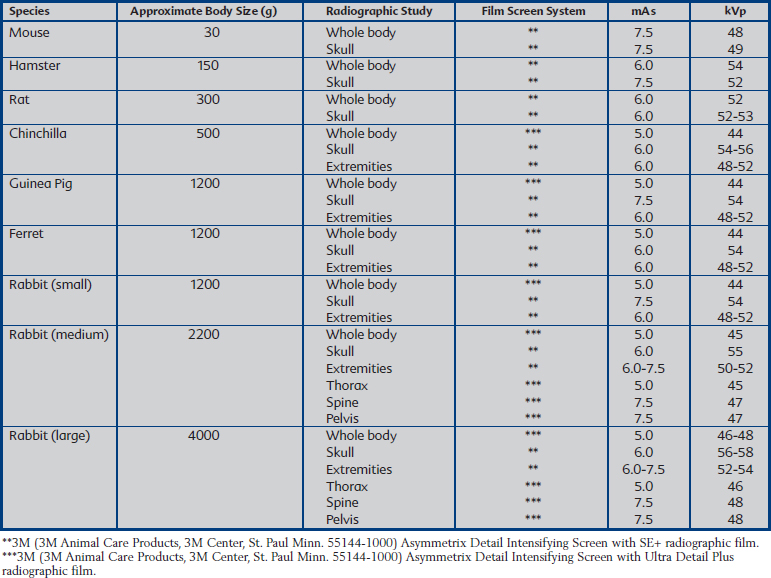Chapter 1 Radiology Equipment and Positioning Techniques
RADIOGRAPHIC EQUIPMENT
Asymetrix Detail Intensifying Screens (3M Animal Care Products, 3M Center, St. Paul, Minn. 55144-1000) and Ultra Detail Plus or SE+ radiographic film (3M Animal Care Products) were used to produce the radiographic images in this book. This film–screen combination produced a radiographic system speed of 100 to 350. Other film–screen combinations of similar speed and resolution could be used. Table 1-1 summarizes radiographic exposure factors used for creating this text’s radiographic images using the table-top technique. These settings are intended to be guidelines and may require modification depending on the x-ray generator, film–screen combination, radiographic film processing, and patient size.
PATIENT POSITIONING
POSITIONING TECHNIQUE FOR LATERAL RADIOGRAPHIC STUDIES OF THE WHOLE BODY, THORAX, AND ABDOMEN
The patient is placed on the cassette in lateral recumbency. The right lateral recumbent position is standard. The dependent limbs are fully extended, minimizing superimposition on the thorax and abdomen, and secured with tape to the cassette or table in a lateral position. The contralateral limbs are superimposed and similarly secured. The head is fixed in a straight lateral position by gently extending the neck and then securing the head and neck with tape onto the cassette or table. To optimize correct patient positioning, it is sometimes necessary to make minor positional adjustments to the head or extremities by placing small pieces of radiolucent foam under the nose or between the limbs. The tail is extended caudally and taped if necessary (Figures 1-1 to 1-3).







